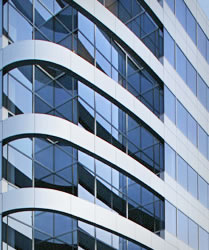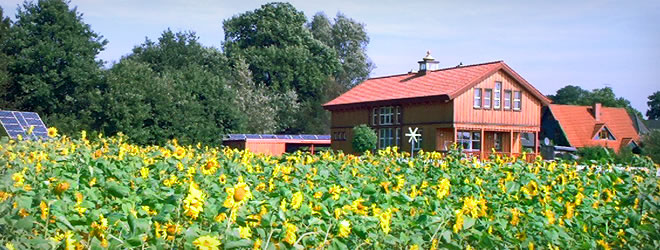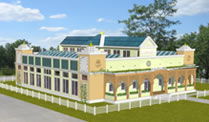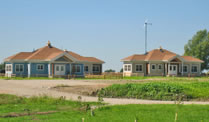The Relationship between Sustainable Building Design
and Maharishi Vastu Architecture
Maharishi Vastu architecture and sustainable building design enjoy a very intimate relationship and a shared central aspiration — to build in harmony with the laws of nature. Vastu architecture is 100% based on the laws that govern the natural world. In contrast, sustainable architecture is based on the best minds of our generation incrementally discovering and applying more laws of nature than did the prior generation.
The sustainability movement is relatively new, emerging just a few decades ago as a reaction to the unintentional harmful consequences caused by two centuries of industrialization. While the goals of sustainable design and construction are laudable and its development absolutely necessary, it is still grappling with finding a holistic basis for solving our pressing environmental problems.
Nature is infinite. On the surface level of life, the relationship between all the parts and systems of Nature is truly beyond the human intellect. Consequently, without access to holistic knowledge, unintended negative results can arise after a time.
The only way to alleviate this situation is to operate from the silent level of creation where all the Laws of Nature are found in a unified state. Maharishi Vastu architecture operates from this unified level. When sustainable green design incorporates the timeless principles of Sthapatya Veda, then the result is a green building that is in complete harmony with Natural Law.
This incremental, experimental basis for green building design ends up being inefficient. While there is much that is valuable in the sustainable architecture movement, it needs an additional approach to help fulfill its goal of designing a building that benefits occupants and environment.
That approach is Maharishi Vastu architecture. This ancient, fully developed system, revived and restored to its purity and completeness by Maharishi Mahesh Yogi, is based on a complete connection to the various laws of nature.
Any aspect of Vedic knowledge is based on Samhita, a Sanskrit term that means togetherness or wholeness. Samhita is the unity of all the diverse aspects of Nature, an integration of all the parts into a unified wholeness.
Maharishi Vastu architecture is one of the 40 Samhita-based aspects of Vedic Literature. By aligning manmade structures with cosmic structures in a profound manner, it aligns human intelligence with Cosmic Intelligence and connects human physiology with all the Laws of Nature at their unified source.
From this level, the quality of life is uplifted for the individual, the surrounding environment, and the universe. This fulfills the highest ideals of sustainability.
Our planet faces the challenges of being highly industrialized and highly populated. There is very little room for error when choosing construction materials, heating/cooling systems, water systems, or other systems buildings and cities use because any actions taken when constructing large quantities of buildings will have significant consequences on the environment.
When Vastu architecture was practiced in ancient times, it was naturally “green.” There were no synthetic materials in existence. Now, in our industrialized civilization, we have moved away from most natural systems. If we continue our need for electrical systems, furnaces, air conditioning, and other industrialized technologies, then it is critical that we figure out how to apply and deliver these systems in ways that will have the least impact upon our planet.
It imperative for sustainable engineers to research, invent, and manufacture new ways to provide green materials and systems that will replace current systems which pollute and stress our environment.







